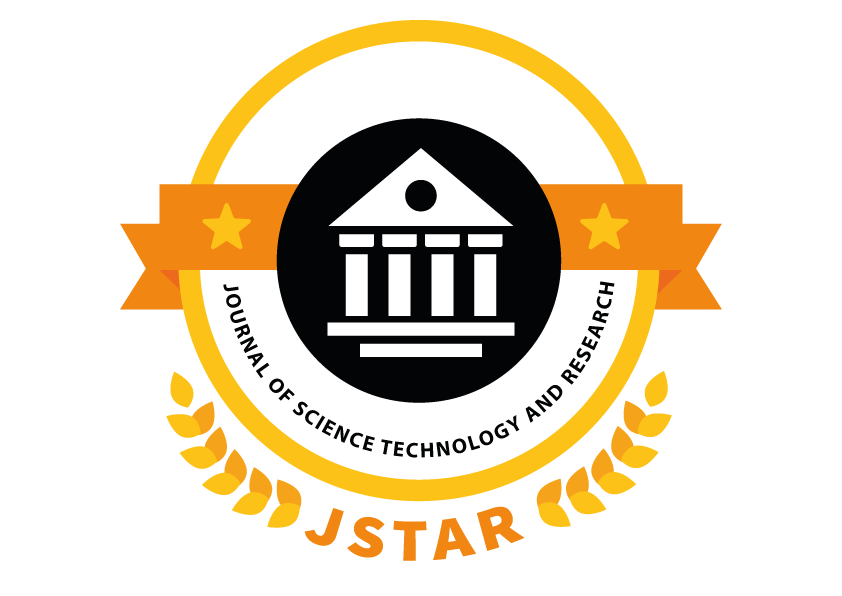Author:
Hetal M Pathak, Shweta ShahPublished in
Journal of Science Technology and Research( Volume , Issue )
1. M.L. Crawford “Generation of standard EM fields using TEM trans-mission cells,” IEEE Transactions on Electromagnetic Compatibility,Vol. EMC-16, No.4,pp.189-195, November 1974.
2. Rahul Prakash, Thesis submitted on “Analysis of Electromagnetic pulse simulator” in Faculty of Engineering by Supercomputer Education and Research Centre Indian Institute of Science Bangalore -560 012 (India) September 2007.
3. Turk J Elec Engin,” FEM Journals”, Volume.11, No.2, 2003.
4. Kresimir Malaric , Iva Bacic ,”Efficiency of the Materials used in Building TEM-Cell,” Dept. of Wireless Communications, Faculty of Electrical Engineering and Computing, Unska 3, 10000 Zagreb, Croatia in 2008.
5. Karthick, R., and M. Sundararajan. “PSO based out-of-order (OoO) execution scheme for HT-MPSOC.” Journal of Advanced Research in Dynamical and Control Systems 9 (2017): 1969.
6. Karthick, R., and M. Sundararajan. “Design and Implementation of Low Power Testing Using Advanced Razor Based Processor.” International Journal of Applied Engineering Research 12, no. 17 (2017): 6384-6390.
7. Karthick, R., and M. Sundararajan. “A reconfigurable method for time-correlated MIMO channels with a decision feedback receiver.” International Journal of Applied Engineering Research 12, no. 15 (2017): 5234-5241.
8. Sabarish, P., Karthick, R., Sindhu, A. and Sathiyanathan, N., 2020. Investigation on performance of solar photovoltaic fed hybrid semi impedance source converters. Materials Today: Proceedings., https://doi.org/10.1016/j.matpr.2020.08.390
9. R. Karthick, R. Ramkumar, M. Akram et al., Overcome the challenges in bio-medical instruments using IOT – A review, Materials Today: Proceedings, https://doi.org/10.1016/j.matpr.2020.08.420
10. Sabarish, P., Raj, L.H.T., Ramprakash, G. and Karthick, R., 2020, September. An Energy Efficient Microwave Based Wireless Solar Power Transmission System. In IOP Conference Series: Materials Science and Engineering (Vol. 937, No. 1, p. 012013). IOP Publishing.
11. Vijayalakshmi, S., Sivaraman, P.R., Karthick, R. and Ali, A.N., 2020, September. Implementation of a new Bi-Directional Switch multilevel Inverter for the reduction of harmonics. In IOP Conference Series: Materials Science and Engineering (Vol. 937, No. 1, p. 012026). IOP Publishing.
12. Subramanian, AT Sankara, P. Meenalochini, S. Suba Bala Sathiya, and G. Ram Prakash. “A review on selection of soft magnetic materials for industrial drives.” Materials Today: Proceedings (2020). https://doi.org/10.1016/j.matpr.2020.08.389
13. Kalavalli, C., P. Meenalochini, P. Selvaprasanth, and S. Syed Abdul Haq. “Dual loop control for single phase PWM inverter for distributed generation.”
ABSTRACT:
The symmetric open TEM cell plays a vital role in reducing electromagnetic interference in electronic and communication systems. The rise in RF radiation from modern devices demands effective electromagnetic shielding to protect both equipment and humans. A symmetric open TEM cell is an efficient testing device with a well-defined structure for assessing the electromagnetic compatibility (EMC) of small electronic devices. This paper presents the development and test analysis of such a structure designed to simulate free-space electromagnetic fields. The TEM cell offers precision, affordability, and accessibility, making it ideal for radiated emission and susceptibility testing. It provides stable field distribution up to 500 MHz and supports compliance with CE and SAE standards. Its symmetrical geometry ensures uniform field exposure and low reflection. The device’s electromagnetic characteristics, including impedance, capacitance, and inductance, are thoroughly examined. Results highlight its effectiveness in evaluating field distortions and radiation immunity in tested equipment.
INTRODUCTION:
The symmetric open TEM cell is a key device in modern electromagnetic compatibility testing. First introduced by M.L. Crawford in 1974, this transmission line-based structure operates in Transverse Electromagnetic (TEM) mode, simulating free-space radiation fields. It enables low-cost, accurate immunity and emission tests on small electronic devices. The symmetric open TEM cell features open, easily accessible geometry, making it ideal for both industrial and biological testing environments. It is especially useful for devices like mobile phones, watches, pagers, and PCBs. Its physical design allows uniform electromagnetic field distribution with minimal reflection, ensuring reliable results. Parameters like characteristic impedance, inductance, and capacitance define the field quality. Precise termination reduces backward reflections. Equipment under test (EUT) should meet volume constraints to ensure field uniformity. The symmetric open TEM cell serves as an effective tool for radiation shielding, system calibration, and interference mitigation in electronics, helping manufacturers comply with global EMC regulations.

